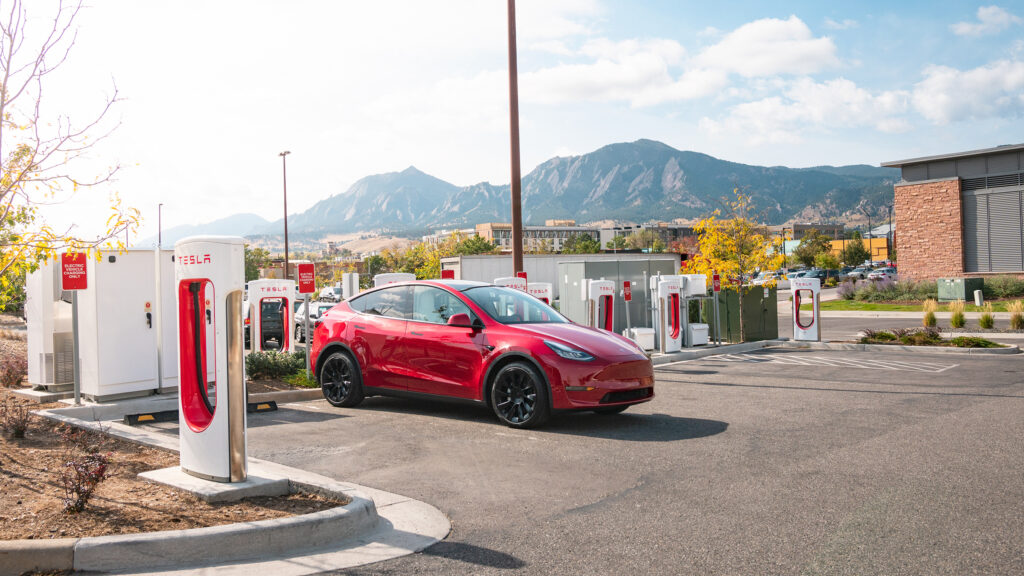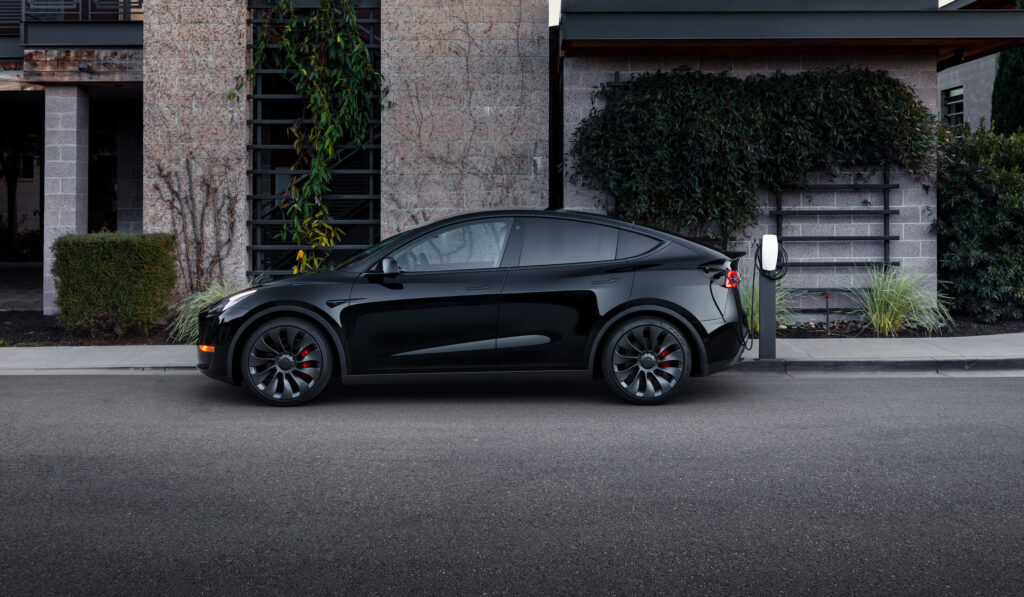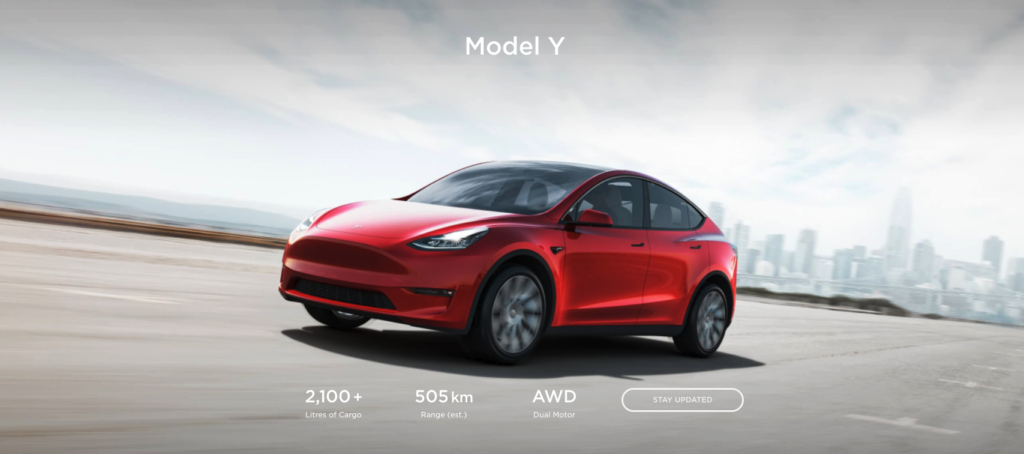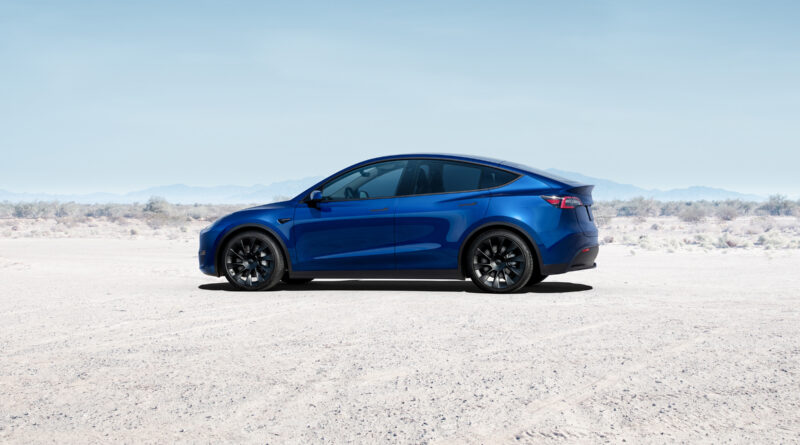Tesla Model Y Australia: Everything we know ahead of the electric SUV’s launch
The Tesla Model 3 dominates EV sales in Australia, accounting for about two-thirds of the battery electric vehicles sold in this market. Little wonder so many are eagerly awaiting the arrival of the Model 3’s SUV spinoff, the Tesla Model Y Australia.
UPDATE: Tesla Model Y pricing and details confirmed for Australia
SUVs are, after all, flavour of the century in the automotive world, and – provided that can secure enough production – the Model Y is shaping as the brand’s best-selling model.

The Model Y is the final piece of the original four core Tesla models: S, X, 3 and Y, which if you rearrange it spells S3XY.
The Tesla Model Y was expected on sale in Australia by now, especially as Tesla has ramped up Model Y production globally and gone through the local certification process.

But it’s not here and it’s not known exactly why, although the popularity of the Model 3 could have something to do with it. If people are queuing for one model that is built in the same factory, why slow production of that one to make more of the other?
Tesla Model Y: Like a Model 3, but bigger and taller
The Tesla Model Y shares its underbody components with the Model 3, but it has a higher riding body.
It’s the same as what existing car makers – from BMW to Toyota – do with SUVs and passenger cars (hatchbacks, sedans and wagons).
Except that with Tesla, it’s all electric and the architecture of the vehicle has been designed to take advantage of that, with a flat battery floor and a longer wheelbase to liberate more interior space.

But there are differences in the dimensions between 3 and Y.
No surprise that the Model Y is taller, its 1624mm height a full 181mm higher than the Model 3.
At 4750mm long it’s also 56mm longer than a Model 3, and its wheelbase is 15mm longer at 2890mm.
The Y is also wider than the 3 at 1921mm, adding 72mm to its girth.
That also makes it longer and wider than its most obvious luxury rivals, the Audi Q5, BMW X3, Mercedes-Benz GLC and Lexus NX. The Model Y is, however, marginally lower than each of those.
The Model Y will also compete with battery electric vehicles from some of those brands, including the BMW iX3, Audi e-Tron and Mercedes-Benz EQC.
Still, given the packaging benefits of an EV platform, the Model Y promises more interior space than the ICE SUVs it will in some ways compete with.
Seating for five
In some markets the Model Y is available with three rows of seats able to accommodate up to seven people.
But in Australia Tesla has only currently certified the five-seat models for local sale. The back seat has a 40/20/40 split-fold function to improve loading options.

That doesn’t mean there won’t be a seven-seater sold here in future, although it seems unlikely in the short term given Tesla hasn’t gone through the regulatory approval.
Another unknown is towing capability.

The Model Y has been certified to tow up to 1600kg. But that doesn’t necessarily mean owners will be allowed to tow with it in Australia.
READ MORE: Complete guide to towing with an EV
With the Model 3, for example, Tesla has certified it to tow up to 1000kg here, but the Australian owner’s manual explicitly states the car cannot be used for towing, even claiming it “can cause damage and increase the risk of a collision”.

That said, there’s clearly more appetite for a towbar on an SUV, even if it’s just for fitting a bike rack or towing a box trailer. So fingers crossed it gets the towing capability locally.
No doubt Tesla will release details closer to the Y’s on-sale date.
Elsewhere, the interior of the Y is pretty much a cut-n-paste of the Model 3. That means a clean, minimalistic dashboard dominated by a central infotainment screen. There’s also an angled wireless pad to charge two phones.

Three models in Y lineup
Approval for sale of the Tesla Model Y in Australia was processed on 15 September, 2021, according to the Department of Infrastructure, Transport, Regional Development and Communication’s website.
In applying for certification Tesla published two images (below), which show a car running on the standard 19-inch wheels. Those wheels are alloys, but they have plastic covers to improve aerodynamics, which is all about improving efficiency.
Tesla has certified three variants of the Model Y for sale in Australia, with model codes SY6LR, LY5LD and PY5LD.
The second digit in the alpha-numeric code refers to Model Y, while the first letter denotes the model variant; S for a model formerly known as Standard Range Plus (expect Tesla to use the name Rear-Wheel Drive, which is what it has supplied to the government), L for Long Range and P for Performance. The final letter – R or D – may denote rear-drive or dual motor.
Tesla Model Y Rear-Wheel Drive
The first model in the Y lineup is the standard car which will use a single electric motor driving the rear wheels and provide 510km of range, according to the Australian Government’s Green Vehicle Guide website, to which Tesla supplies figures.
Tesla claims the lithium-ion battery capacity is 173Ah, which at 360V translates to 62.3kWh. Tesla’s Chinese-made Model 3 runs at 355.2V, which if it is mimicked in the Model Y would make the capacity slightly lower, at 61.5kWh. Either way, the battery capacity looks like being somewhere around 62kWh.

Electricity use is claimed at 14.6kWh per 100km. In certifying the car for sale Tesla claimed it makes 220kW of power, although don’t expect to see that number anywhere in the marketing documentation because Tesla focuses on 0-100km/h acceleration rather than power. The 0-100km/h time for the RWD is claimed at 6.9 seconds.
Expect the usual excellent Tesla connectivity and a similar level of equipment to the Model 3. That means a panoramic sunroof, fake leather seats, heating for all five seating positions, power adjustable front seats, a heated steering wheel and a 15-inch touchscreen. Whereas the entry-level Model 3 gets 18-inch wheels, the Model Y has been homologated with 19-inch wheels. Each tyre is 255mm wide.
Tesla Model Y Long Range
The second car is the Model Y Long Range, which picks up a front electric motor to create an all-wheel drive system and step up the overall output to 378kW.
Claimed range is 612km with electricity use of 15.4kWh per 100km. The battery capacity has been specified as 230Ah, which at 360V means it has a capacity of 82.8kWh or 355.2V is 81.7kWh. We’ll call it 82kWh.

0-100km/h acceleration for ther Long Range is claimed at 5.0 seconds.
If it follows the Model 3 range then the Model Y is likely to not only get the additional motor and extra performance but also a better sound system as part of the deal, taking the total number of speakers to 13.
According to Tesla’s website it will run on the same 19-inch wheels as the Rear-Wheel Drive, but both RWD and Long Range can be optioned with 20-inch wheels.
Tesla Model Y Performance
The top-of-the-range Model Y is the Performance, which uses the same dual-motor setup and battery of the Long Range but boosts the peak power to 393kW. Certification documents suggest the front motor is shared with the Long Range but the Performance gets a more powerful rear motor. The range drops slightly to 604km using 15.6kWh/100km.
Tesla claims a 0-100km/h time of 3.7 seconds, although with an asterix claiming that is “with rollout subtracted”. Rollout is a drag racing term that basically means it starts timing the 0-100km/h run once the car is moving, so it’s more like 5-100km/h.

Given Tesla’s occasional optimism with acceleration times we’d be estimating a real 0-100km/h time somewhere in the low-four-second bracket. That’s still quick, making it similar to the V8-powered Mercedes-Benz GLC63 AMG.
As well as the additional performance it also picks up 21-inch wheels with a staggered size; the front wheels are 255mm wide while the rears are 275mm wide.
How much with the Model Y cost in Australia?
In many countries the Model Y is only sold in dual-motor configurations, which means the Long Range and Performance variants.
Hong Kong is one market that also gets the rear-drive variant, sourced from the Shanghai plant.
READ MORE: Tesla Model Y to put pressure on Model 3 resale prices, according to Redbook
While Tesla Australia’s website currently only lists the Long Range and Performance models, the company has gone to the effort of also certifying the entry-level Rear-Wheel Drive for sale, suggesting it will be part of the mix.

In the UK, the Model Y Long Range costs £57,090 drive-away, almost the same price as the Model 3 Long Range, at £57,590.
In the US the Long Range Y is US$64,990 drive-away versus US$57,490 drive-away for the Model 3 Long Range.
That circa-10-percent premium for the Model Y is replicated in some other markets, too, suggesting the Model Y will cost more in Australia.
Best estimates are that the Model Y Rear-Wheel Drive will start somewhere close to $70,000 before on-road costs, making it about $75,000 drive-away in NSW and Victoria.
At that price it would miss out on the available $3000 rebates in some parts of the country, but it would be eligible for a NSW stamp duty rebate of around $2900.
By our estimates the Model Y Long Range should start at around $82,000 before on-road costs, or about $88K drive-away.
That leaves the Performance at the top of the Model Y tree. Expect the ask to be something close to $100K before on-road costs, or around $105K drive-away.

Overseas the Y is available in the same five colours the Model 3 comes in: white, black, silver/grey, blue and red. Expect four of those colours to have a price premium.
The standard interior colour is black with white as an option.
Chinese build for Australian Model Ys
The Model Y is built in four plants around the world: the original Tesla factory in Fremont, California; a recently opened factory in Texas; the Shanghai plant in China; and the recently opened plant in Berlin, Germany.
While the cars look the same, there are production differences beneath the skin, most of which comes down to the battery pack.
The Model Y can be produced either with older 2170 battery cells (21mm in diameter and 70mm high) or with newer 4680 cells (yep, 46mm diameter, 80mm tall).
The 4680 cells are not only claimed to be of a higher energy density (so can hold more electricity) but are also used to form the structure of the car, in turn bringing other benefits.
Given the proximity to Australia and the fact our Model 3s come from China it makes sense that the Model Y will also be sourced from Shanghai. That’s where our Model 3s have come from since early 2021; we’ve extensively covered the differences between the Chinese- and US-built Tesla Model 3s previously.
While Tesla is building cars with the 4680 structural battery cells at its Texas, Berlin and Shanghai plants, it is not known which will be fitted to Australian Model Ys.
When will the Model Y go on sale in Australia?
Exactly when the Tesla Y will go on sale in Australia is for now unknown.
Tesla either makes big promises years in advance that then tend to miss their targets or announces a change or update that happens almost immediately.
Staff at Tesla dealerships tend to have no idea on when the Model Y will arrive either.
On the Tesla Australia website the company has some basic details of the Model Y but does not yet allow people to place deposits, instead allowing them to leave their email address to “stay updated”. That in itself is strange given you could previously order a Cybertruck (running years late and looking like 2024 or later) and can still order an updated Model S or Model X.
Most expected the Model Y to make an Australian debut some time in 2021.
That clearly didn’t happen. Best guesses on why it was apparently delayed include a massive ramp-up in demand of the Model 3 (which comes from the same factory, therefore potentially impacting the ability to produce Model Ys). The deal to supply 100,000 Teslas to Hertz could also have put pressure on factories, in turn impacting supply elsewhere.
Expect big sales
Traditional car makers have long thought traditional sedans are on the nose. Sales have been diving as buyers gravitate to SUVs.
But the Model 3 proved that wrong. In 2022 the Model 3 has been among the top selling sedans in the country – and growing.

All of which suggests the Model Y will be an even bigger success.
You don’t have to wander too close to a charging station to realise many Model 3 owners are planning to upgrade to a Model Y.
In 2021 SUVs made up more than 50 percent of the market for the first time.
In the luxury market where it was once prestige sedans the market wanted, these days it’s SUVs. The Audi Q5, for example, sells more than double Audi’s more traditional A4 and A5 sedans. BMW’s former top seller, the 3-Series, is now outsold by the X3, albeit only just. And for Mercedes-Benz the GLC mid-sized SUV comfortably outsells the C-Class sedan.
All of which suggests Tesla could be sitting on imminent sales success in Australia with its Model Y.
In 2021 Tesla sold 12,094 Model 3s in Australia, which is at least triple the volume of its most obvious prestige rivals. For the Tesla Model Y Australia, then, we expect big things.

Given the popularity of SUVs, the expectation is the Model Y could be even bigger, possibly commanding 15-20,000 sales annually.
That would not only comfortably make it the top-selling prestige car, but also one of the top selling SUVs outright.
Of course, the challenge for Tesla could be keeping up with demand.
Model 3 sales are running hot and already waiting lists are into 2023.
The big question is when the Model Y will land Down Under…
Tesla Model Y Australian specifications
Body: Mid-sized SUV wagon
Length/width/height/wheelbase: 4750mm/1921mm/1624mm/2890mm
Seats: 5 (the Y is also available as a 7-seater overseas)
Models: Rear Wheel-Drive, Long Range, Performance
Tesla Model Y Rear-Wheel Drive
Price: From about $70,000 plus on-road costs
EV range: 510km
Electricity use: 14.6kWh/100km
Power: 220kW
Motors: Single electric motor driving the rear wheels
Battery capacity: 62kWh
Standard equipment: 19-inch wheels, 15-inch touchscreen, panoramic sunroof, dual wireless phone chargers, heated seats front and rear, power adjustable front seats, heated steering wheel
Tesla Model Y Long Range
Price: From about $84,000 plus on-road costs
EV range: 612km
Electricity use: 15.4kWh/100km
Motors: Dual electric motors driving all four wheels
Power: 378kW
Battery capacity: 82KWh
Standard equipment: 19-inch wheels, 15-inch touchscreen, premium sound system, panoramic sunroof, dual wireless phone chargers, heated seats front and rear, power adjustable front seats, heated steering wheel
Tesla Model Y Performance
Price: From about $97,000 plus on-road costs
EV range: 604km
Electricity use: 15.6kWh/100km
Motors: Dual electric motors driving all four wheels
Power: 393kW
Battery capacity: 82KWh
Standard equipment: 21-inch wheels, 15-inch touchscreen, premium sound system, panoramic sunroof, dual wireless phone chargers, heated seats front and rear, power adjustable front seats, heated steering wheel






